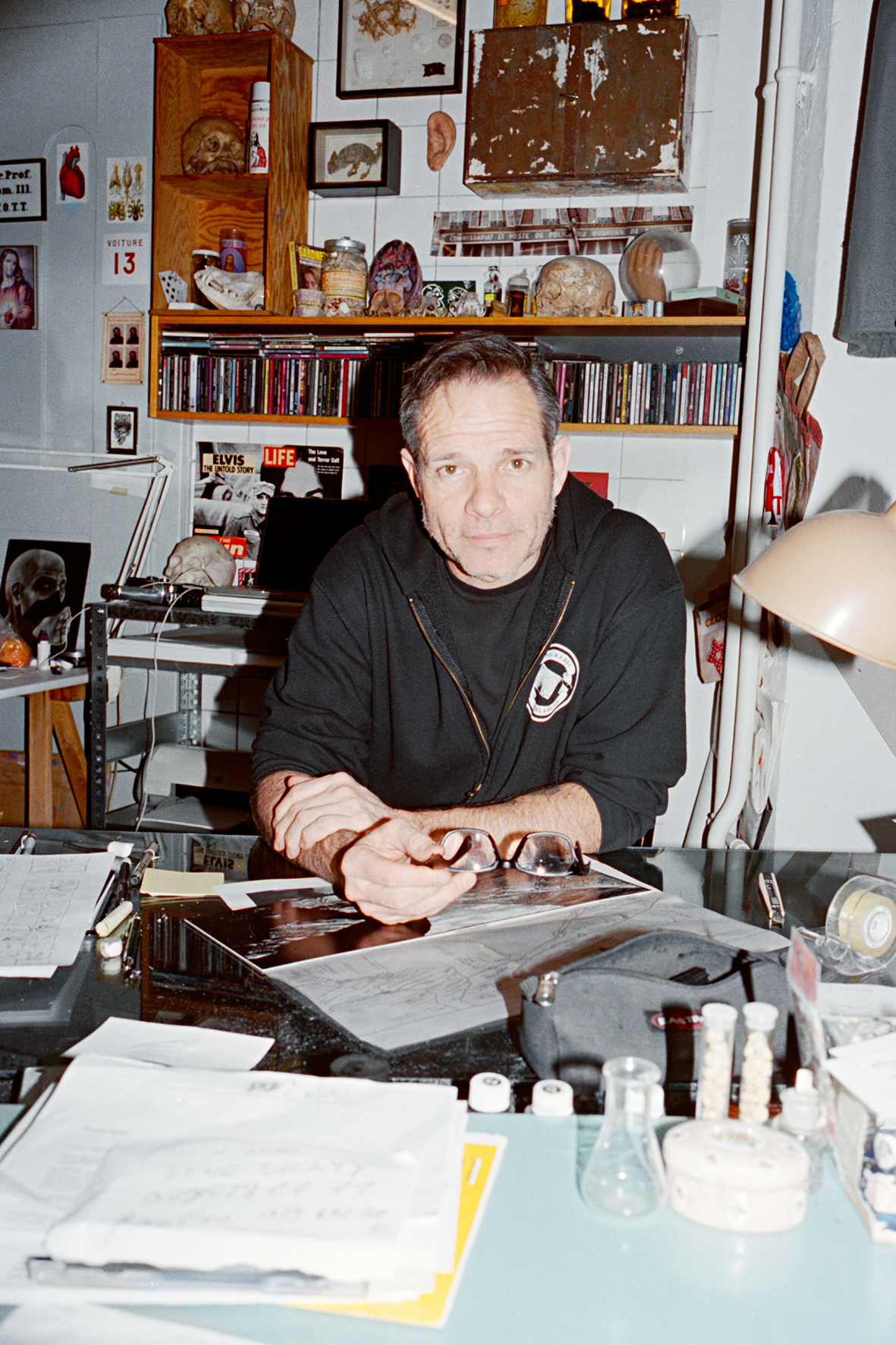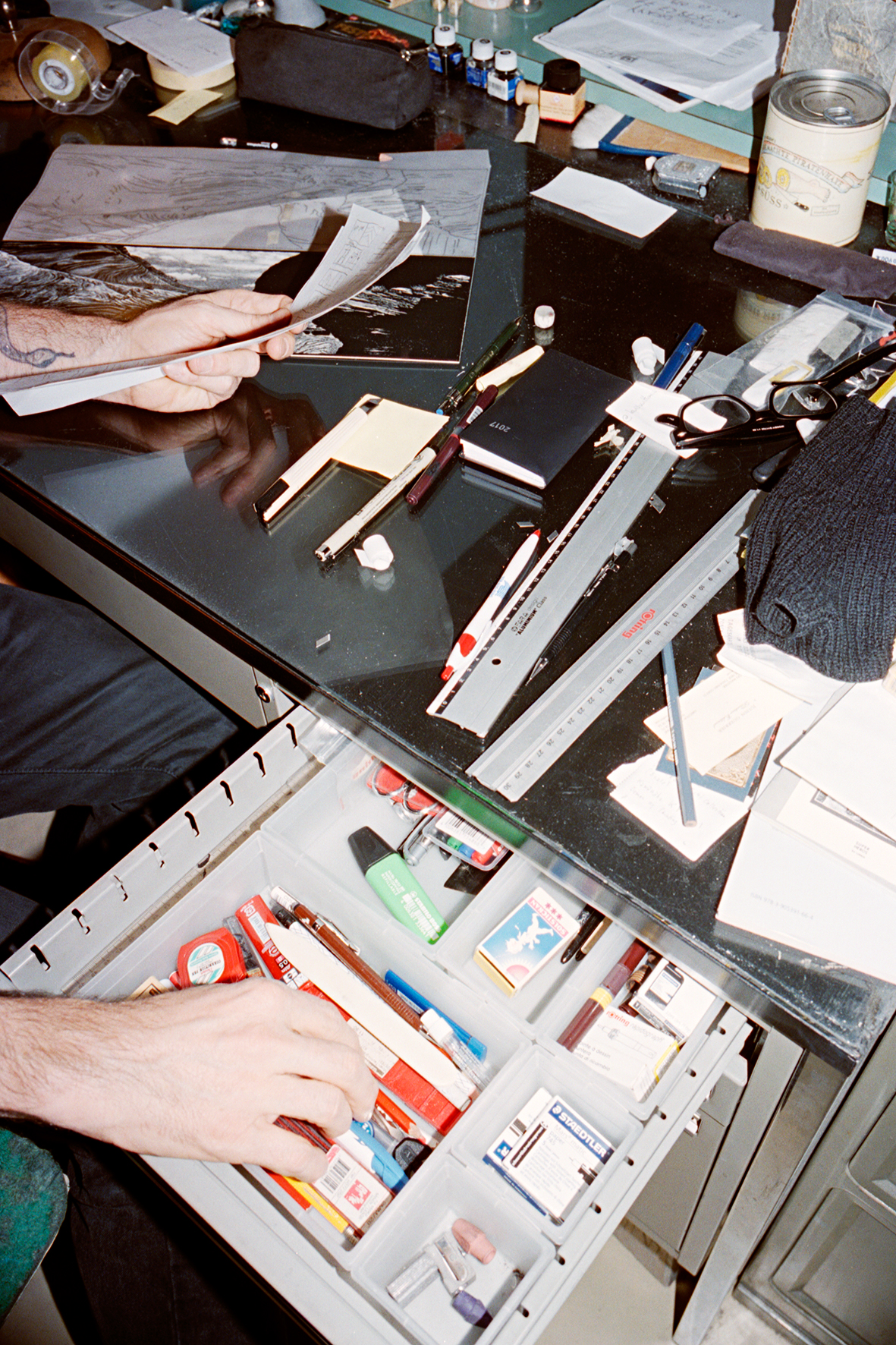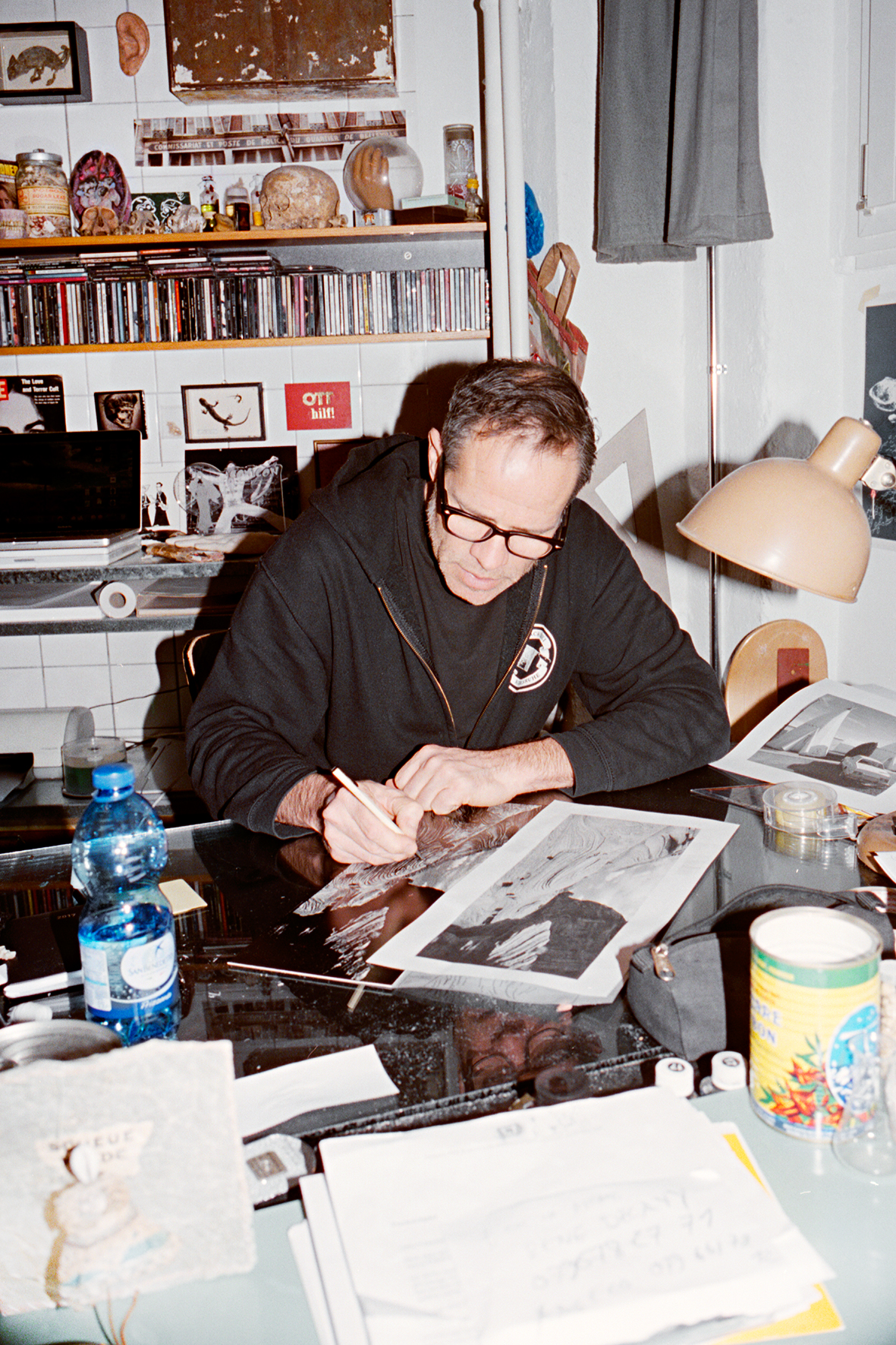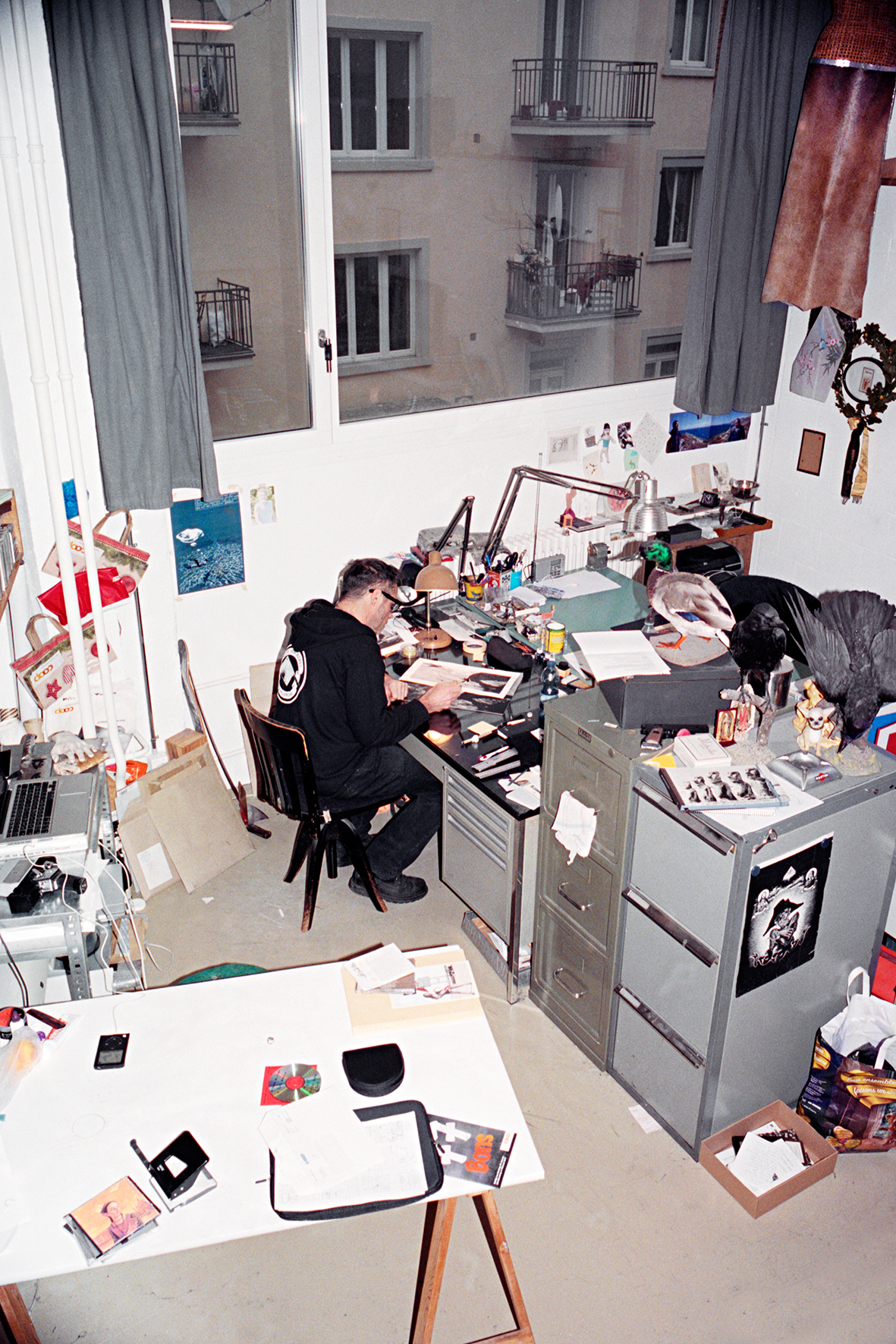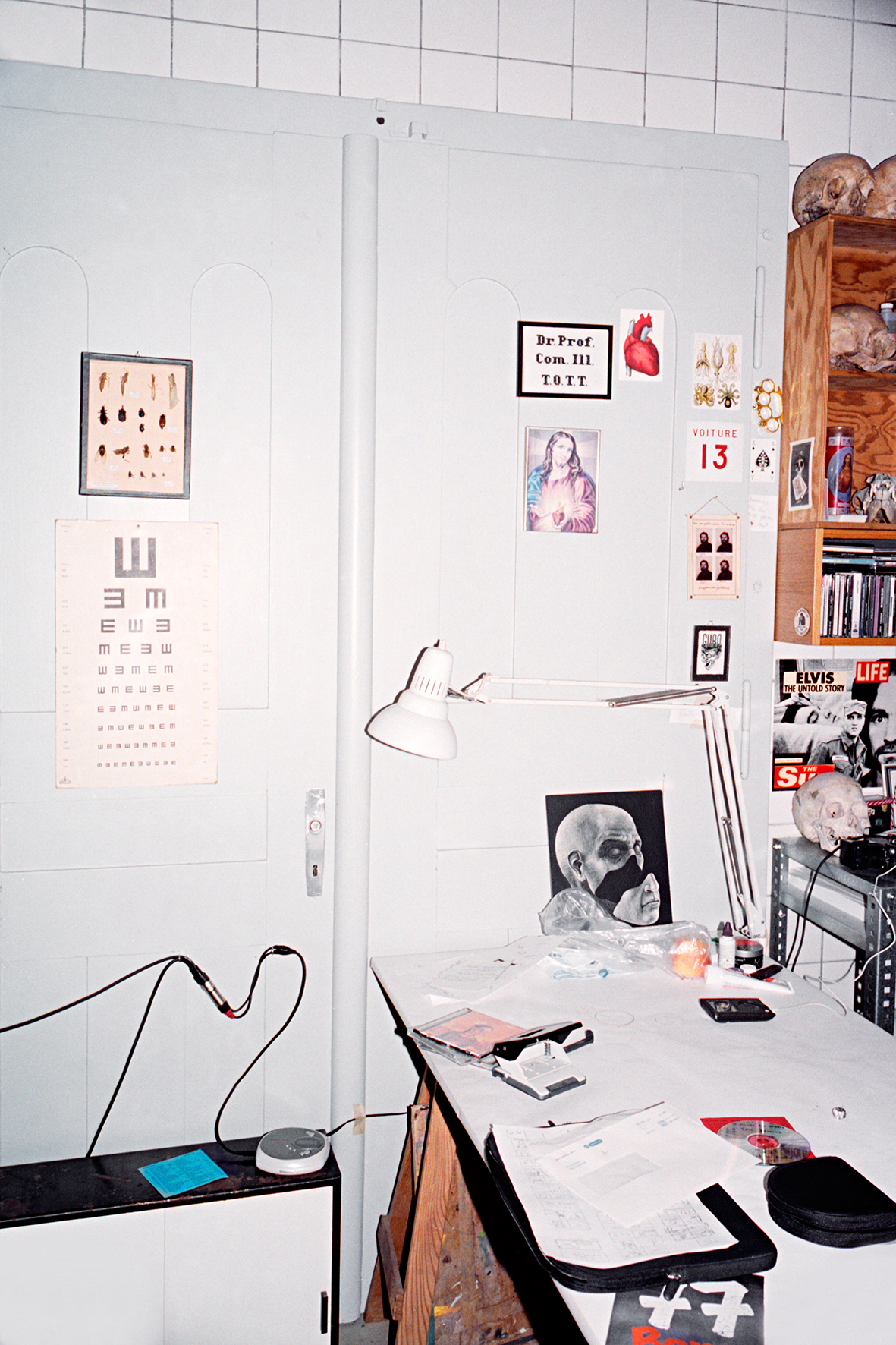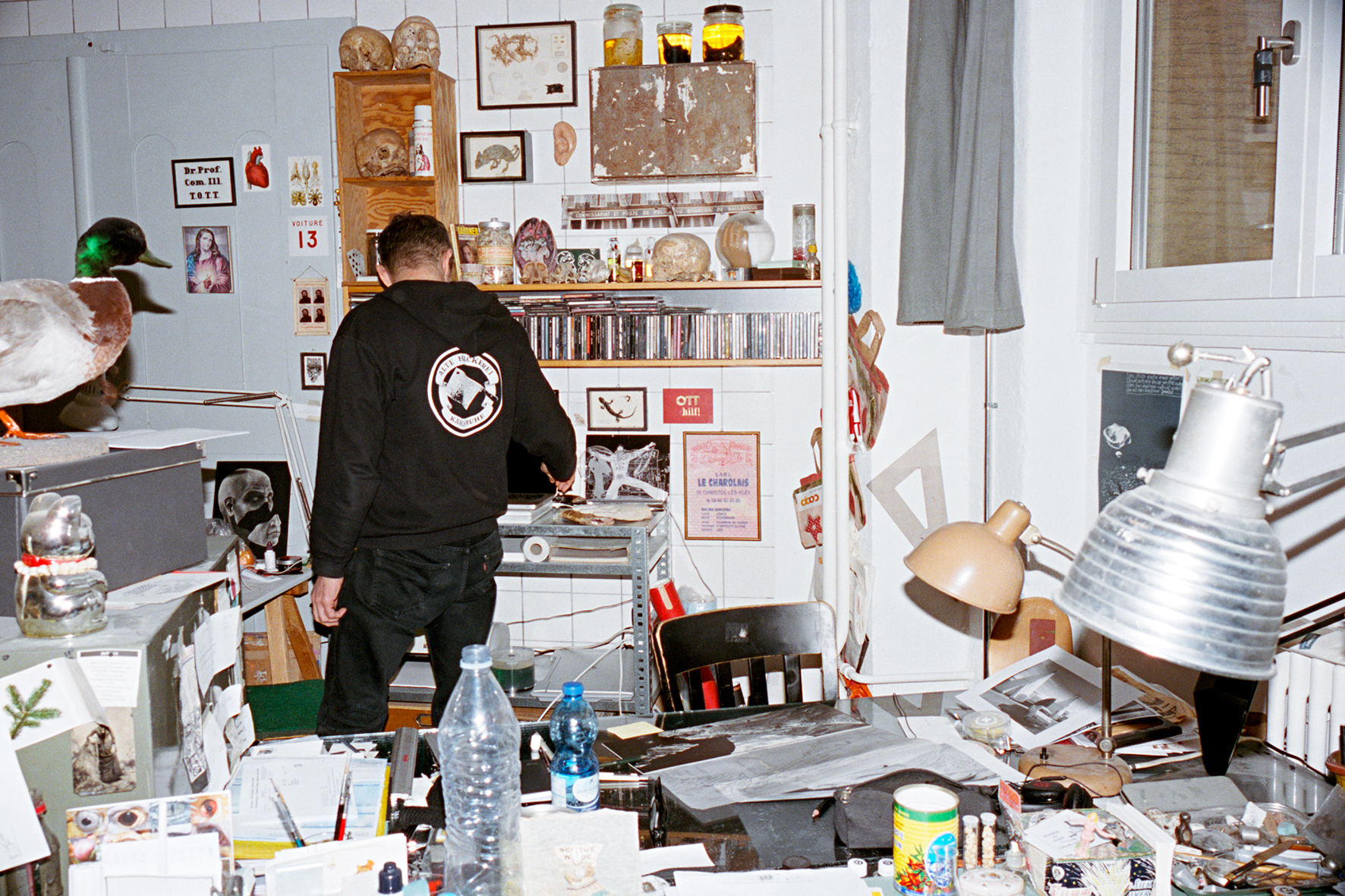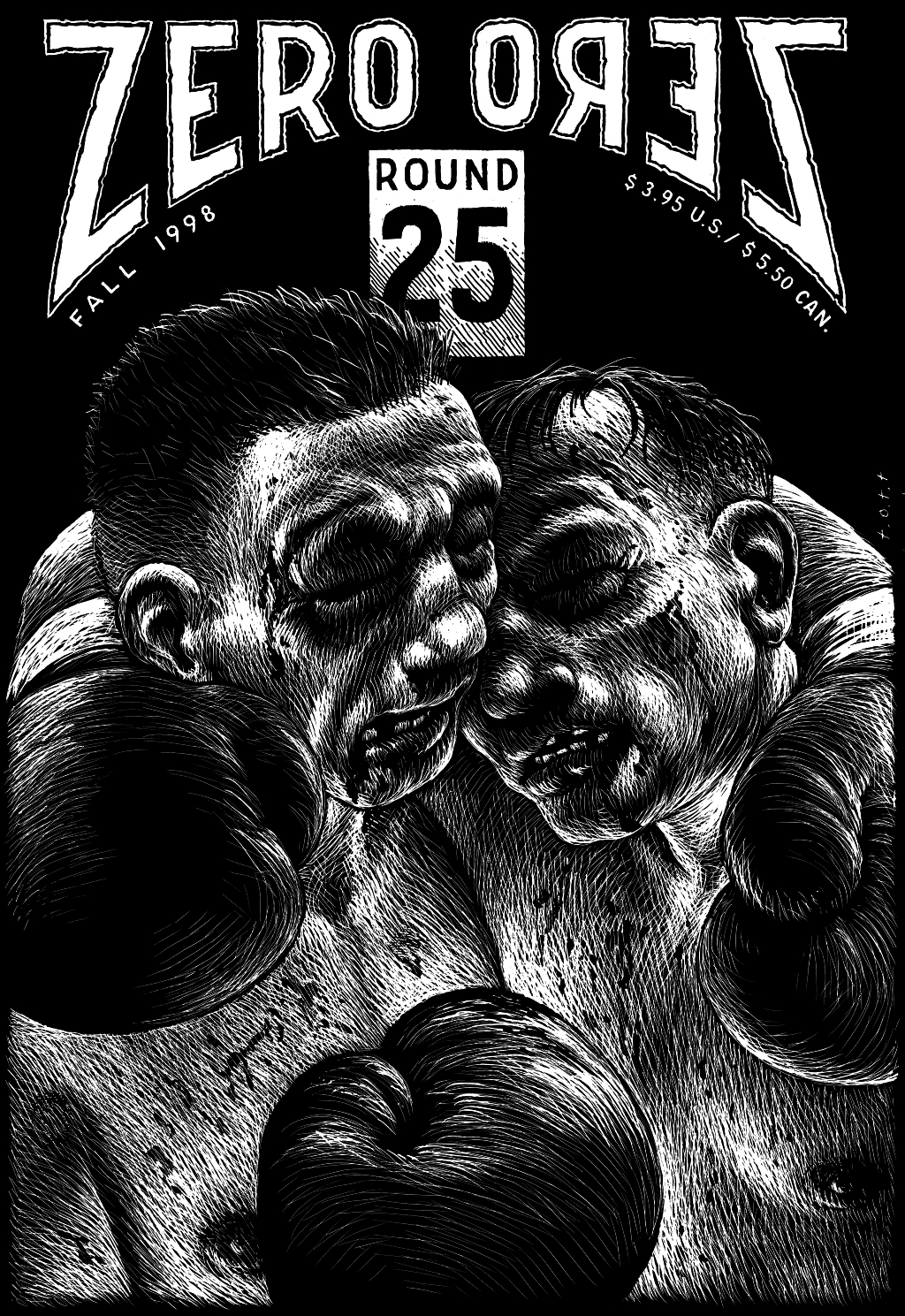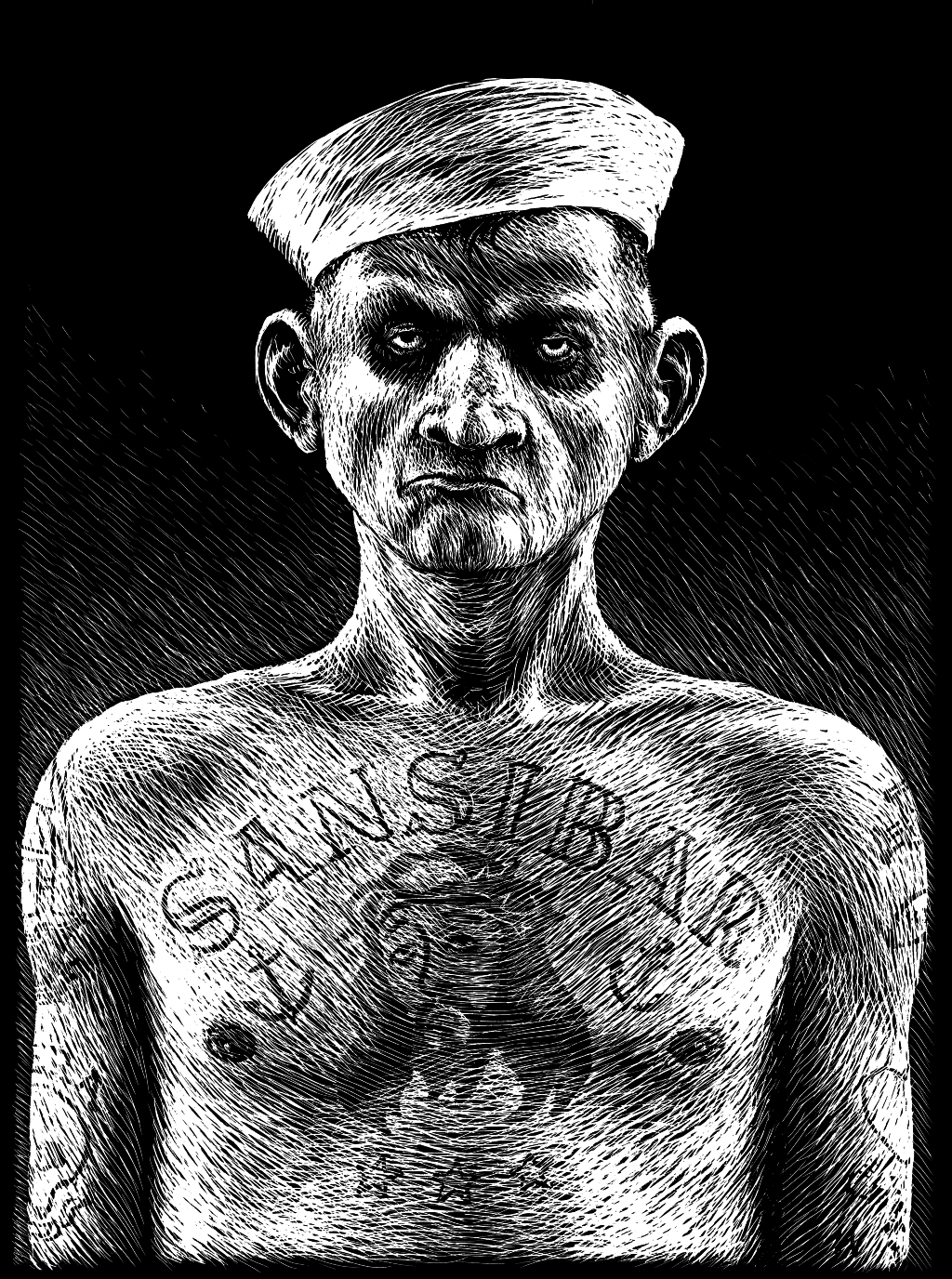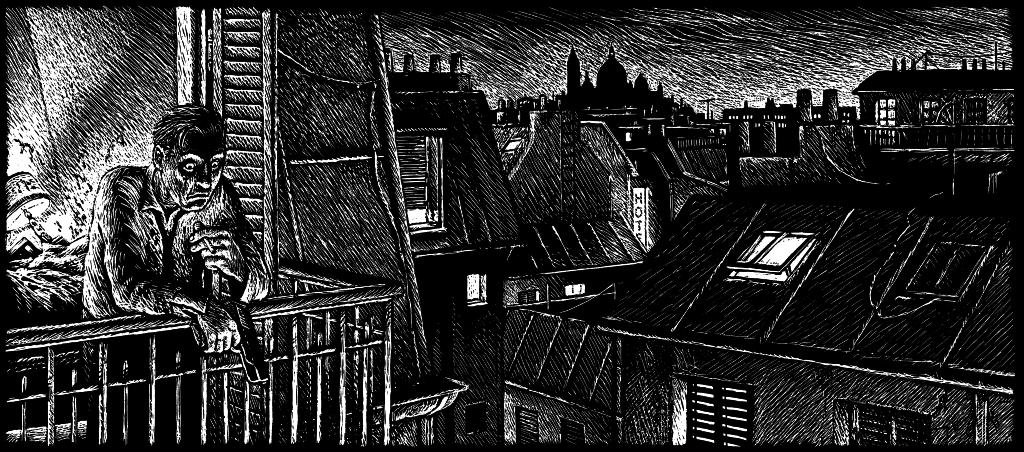Thomas Ott, 1966
Comics artist and illustrator, Zurich
Thomas Ott (born 1966) is a Zurich-based comics artist and illustrator who creates immersive and unique dark worlds. Following his studies at the Kunstgewerbeschule in Zurich, Ott's work has appeared in numerous newspapers and magazines throughout Europe. From his first book Tales of Error to his latest tome, A Hell of a Woman, he has refined his use of the scratchboard as a medium, creating striking characters and scenes with painstaking detail and clarity. Simultaneously, Ott's wordless stories have become more layered and complex, giving rise to kaleidoscopic narratives that are both violent and mesmerizing.
The Confederation grants Ott a Swiss Grand Award for Design in recognition of his unique place in the Swiss comics and illustration scene, as well as his unmistakable international appeal. The distinction of his work marks the first time the Award is bestowed upon a comics artist.
Essay
Gruesomely Glorious
As far as we know, no research has been conducted into whether or not every human being after 1945, between Moscow and New York, has drawn a death's head at least once in their lives.
But even without suitable proof, we are absolutely sure that the death‘s head is an irrefutable part of said collective memory - and probably far beyond.
Fear mongering and hysterical threat-opportunism by way of the death's head are more familiar to us than ever before. As anxiety for the small-minded, they are stoked, bundled and cooked with commercial rigor, landing ready for consumption on living room tables the world over. The death's head has a whale of a time in silence. Ott comes later.
Tycoon and TV reality star Robert Geiss aka Roberto Geissini along with other mainstream gurus of Thomas Sabo or Ed Hardy ilk sell their slick eggheads ready-made, thereby undermining all the fun that fear provides and all respect for cults, too. That's not good.
Their shirts sport a meltdown of skull, cross and Stars & Stripes, a triptych of meaninglessness that's an exquisite match for their high-gloss, rhinestone-studded death's head bling. Should you happen to end up in a barrage of flashing cameras on the way to the next tattoo studio, your hand might well shoot up unbidden in Satanic greeting. Almost like back in the days when Guns N' Roses took root in the brainy outback of every teenager in the pop universe.
And those who have since had their tramp stamps lasered away are now decking themselves out like society-jostler Cora Schumacher with her death's head dirndl to wear and not to wear. And nowhere near as risky. No matter what carnival it's for. Question is who is more startled : the wearer or the worn.
They celebrate in José Guadalupe Posada's carnival, too. But differently. His skeletons dance frenetically as a symbol of reconciliation between life and death, making fun of an upper-class that was dead long before it even took its first breath. Their skulls grin in diabolical silence. Here comes Ott.
Anybody who has been alone for too long and starts believing that death is a dangerous, dark pain in the ass with tons of bestial tentacles is clearly more attuned to the fact that perception interweaves reality and fiction more than meets the eye. We can only speculate how long Ott sits in solitude gazing into the dark glass and philandering with gruesomely glorious death.
He's hard as nails when he picks apart the quest for happiness in bloody pyres, along with people looking for a well-ordered life among piles of headless hysterics.
He liberates humans from humanity. Grotesque and playful, he flaunts what happens when things turn out for the worst after all. Not unconcerned, he liquidates anticipation of better things to come in uninhibited celebration of the bad. There is no room for captives on the downward spiral of this hell ride. That's the only way it's really fun to be dead.
Clarity at long last. After a life of heteronomy, people devoured by routine look straight at the certainty of death with eyes wide open - staged by themselves. Or was it only a beautiful dream? Dead or not dead - that is not the question anymore.
The boundaries have all dissolved in his sweaty black-andwhite slaughter, and the edge of the world has begun.
Ott zealously champions the lonely leftover souls of society. Murderers, drinkers, prostitutes, bad mothers, decrepit dreamers - he manages to pull them all through somehow - or kill them.
All the rest, the infirm, the losers and the eternally damned, are cordially welcome to join him on his last journey to the cemetery of innocent souls.
PS:
You won't hear Jim Morrison singing " The End ". He's in residence at a different cemetery.
A.C. Kupper and Suzana Rozkosny
Translation: Catherine Schelbert


